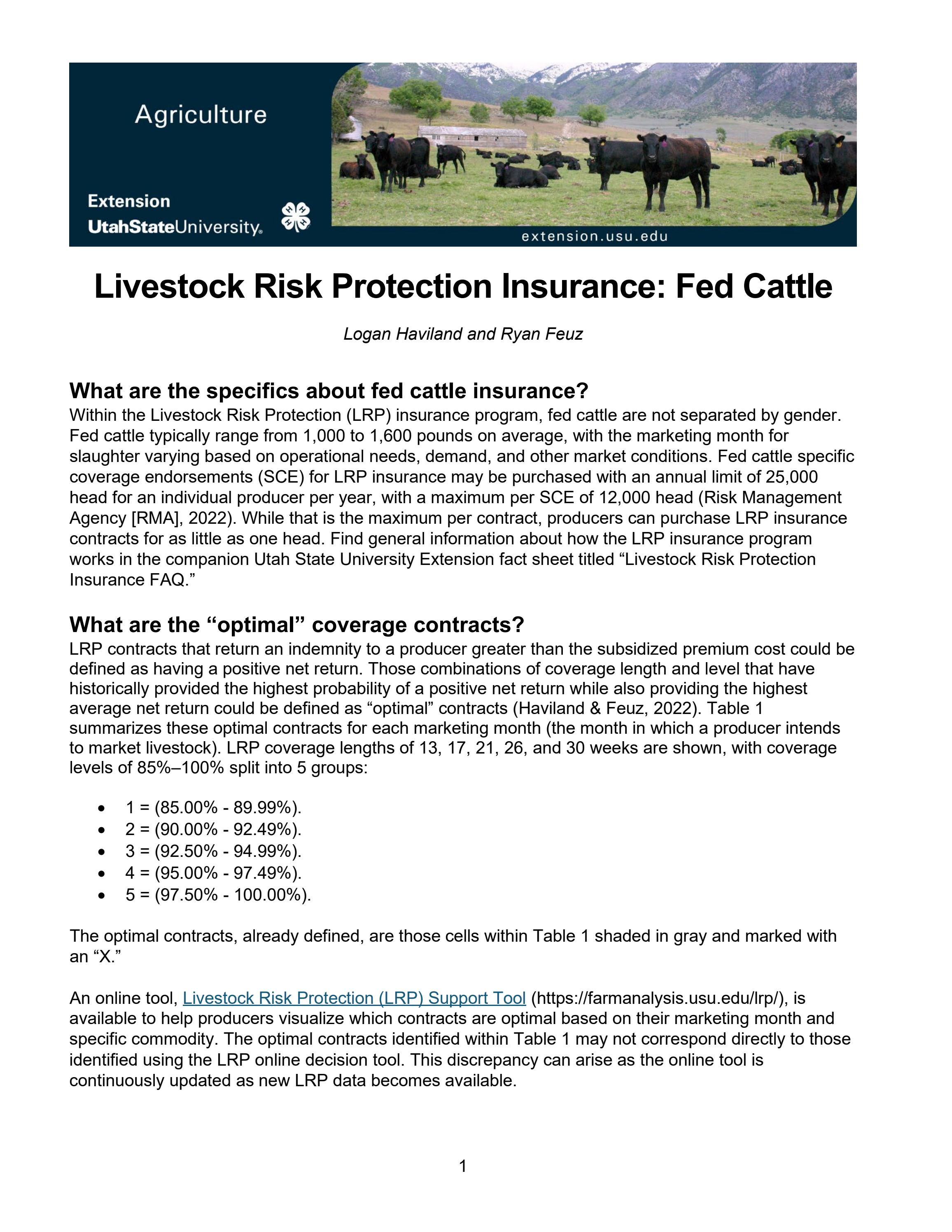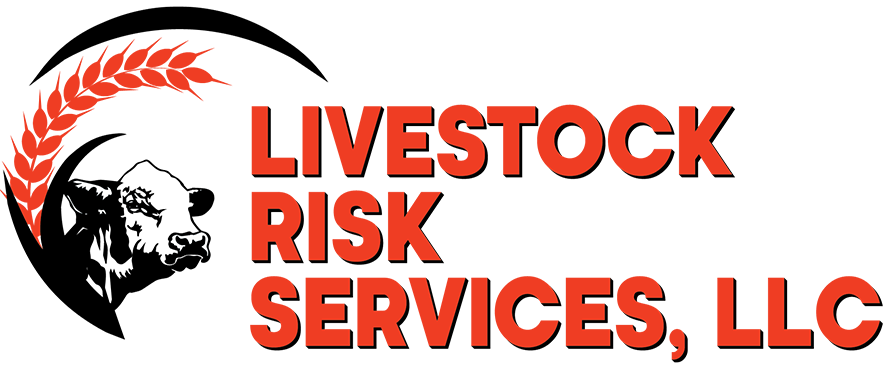Recognizing Animals Threat Protection (LRP) Insurance Coverage: A Comprehensive Guide
Navigating the world of livestock threat security (LRP) insurance can be an intricate endeavor for several in the agricultural industry. This kind of insurance supplies a safeguard versus market variations and unexpected conditions that might impact livestock manufacturers. By understanding the details of LRP insurance coverage, producers can make enlightened decisions that may safeguard their procedures from monetary risks. From just how LRP insurance coverage works to the numerous insurance coverage alternatives offered, there is much to reveal in this extensive guide that can possibly shape the way livestock producers approach risk management in their services.

Exactly How LRP Insurance Works
Sometimes, comprehending the mechanics of Animals Threat Security (LRP) insurance can be intricate, however breaking down just how it functions can give quality for breeders and farmers. LRP insurance coverage is a risk monitoring device designed to shield livestock manufacturers against unanticipated cost decreases. The policy allows producers to set a protection level based on their details demands, selecting the variety of head, weight variety, and coverage cost. Once the policy remains in place, if market value fall listed below the protection rate, producers can sue for the difference. It is necessary to keep in mind that LRP insurance policy is not an earnings warranty; instead, it focuses only on rate threat defense. The protection period usually ranges from 13 to 52 weeks, providing adaptability for manufacturers to select a period that straightens with their manufacturing cycle. By making use of LRP insurance coverage, breeders and farmers can reduce the monetary threats related to changing market value, ensuring higher security in their procedures.
Qualification and Insurance Coverage Options

When it comes to insurance coverage alternatives, LRP insurance offers manufacturers the flexibility to pick the insurance coverage degree, protection period, and endorsements that best suit their threat monitoring demands. By recognizing the qualification standards and insurance coverage options offered, animals producers can make informed decisions to manage threat effectively.
Advantages And Disadvantages of LRP Insurance
When evaluating Animals Danger Defense (LRP) insurance policy, it is crucial for animals manufacturers to evaluate the downsides and benefits integral in this danger administration device.

One of the key benefits of LRP insurance coverage is its capacity to give protection against a decline in livestock costs. In addition, LRP insurance coverage supplies a degree of flexibility, permitting see here producers to tailor coverage levels and plan durations to suit their specific needs.
One constraint of LRP insurance policy is that it does not safeguard against all kinds of risks, such as condition break outs or all-natural disasters. It is essential for producers to thoroughly analyze their individual risk exposure and financial circumstance to establish if LRP insurance policy is the best risk management device for their operation.
Understanding LRP Insurance Premiums

Tips for Making The Most Of LRP Benefits
Taking full advantage of the advantages of Livestock Risk Security (LRP) insurance policy requires tactical planning and positive danger management - Bagley Risk Management. To make the most of your LRP insurance coverage, think about the complying with ideas:
Routinely Evaluate Market Conditions: Remain notified regarding market patterns and cost variations in the animals sector. By keeping track of these elements, you can make educated choices concerning when to buy LRP protection to safeguard against possible losses.
Establish Realistic Protection Levels: When choosing insurance coverage degrees, consider your manufacturing prices, market value of livestock, and potential risks - Bagley Risk Management. Setting reasonable protection degrees ensures that you are properly secured without paying too much for unnecessary insurance coverage
Expand Your Protection: Rather than depending exclusively on LRP insurance coverage, think about diversifying your risk administration methods. Integrating LRP with other risk monitoring devices such as futures contracts or alternatives can give detailed protection against market unpredictabilities.
Testimonial and Adjust Coverage Routinely: As market problems alter, periodically assess your LRP protection to guarantee it lines up with your current threat exposure. Adjusting insurance coverage levels and timing of acquisitions can assist enhance your risk defense method. By complying with these ideas, you can make best use of the benefits of LRP insurance policy and safeguard your livestock procedure against unpredicted risks.
Verdict
Finally, animals danger defense (LRP) insurance coverage is an important tool for farmers to manage the economic dangers related to their livestock procedures. By understanding exactly how LRP functions, eligibility and insurance coverage options, in addition to the pros and disadvantages of this insurance coverage, farmers can make enlightened decisions to secure their livelihoods. By meticulously considering LRP premiums and applying techniques to make the most of benefits, farmers can alleviate potential losses and guarantee the sustainability of their operations.
Livestock producers interested in acquiring Animals Threat Defense (LRP) insurance can explore a variety of eligibility requirements a fantastic read and insurance coverage alternatives customized to their specific livestock procedures.When it comes to protection choices, LRP insurance policy supplies manufacturers the flexibility to choose the protection level, protection period, and recommendations that ideal match their risk management requirements.To comprehend the intricacies of Livestock Risk Protection (LRP) insurance policy totally, comprehending the aspects influencing LRP insurance coverage premiums is important. LRP insurance coverage costs are identified by different aspects, including the coverage degree selected, the expected cost of livestock at the end of the coverage duration, the kind of livestock being insured, and the size of the insurance coverage period.Testimonial and Change Protection On a regular basis: As market conditions change, periodically assess your LRP protection to ensure it straightens with your present danger exposure.